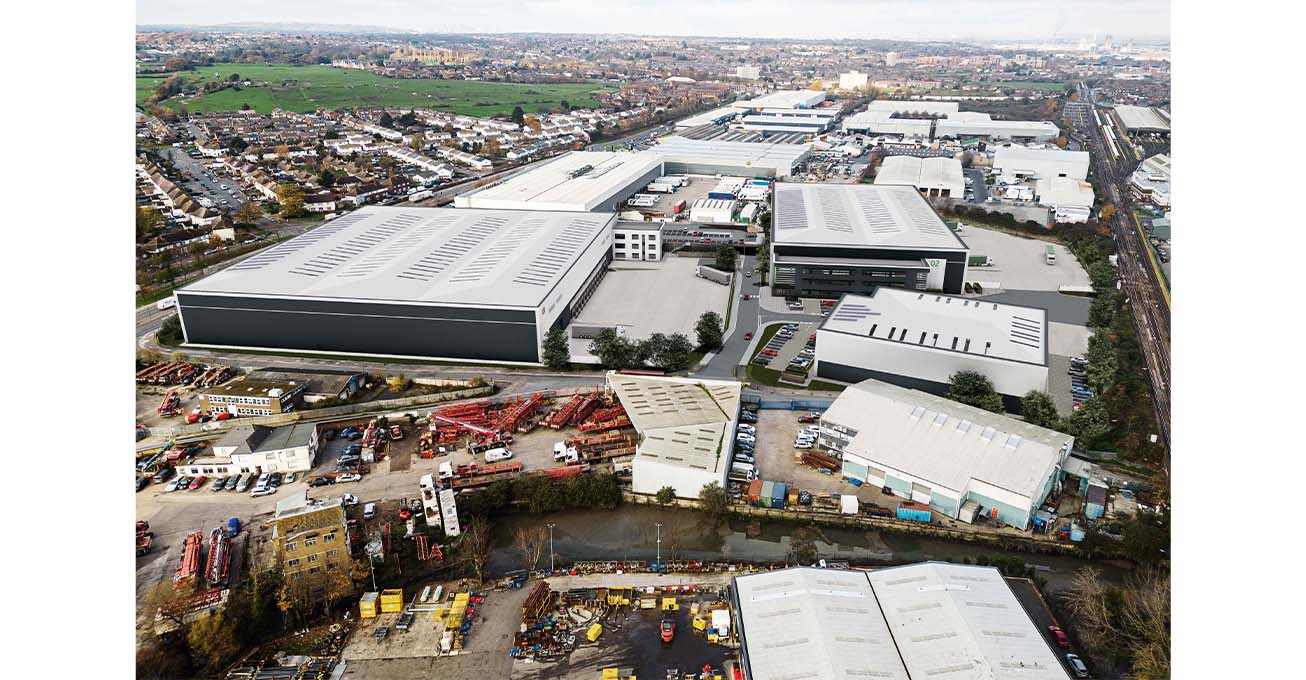Thomas Olsson, Chief Technical Officer at Wolverhampton-based pallet network Pallet-Track, looks at how artificial intelligence will be used in the supply chain, both now and in the future.
Logistics, especially heavy logistics, is still very old fashioned and hasn’t really embraced change. I always remember one of my first visits to a transport company more than 20 years ago, when we did a system upgrade and introduced the internet at the time when the depot was using modems.
I sat down with the business owner who wanted to understand why he should pay an extra £50 a month for ‘the internet’ and what value it would bring. As I sat talking to him and explaining the benefits – live data flows to reduce phone calls, using email, access to customer information and so on – I couldn’t help noticing there were three cheques on his table.
After a long discussion, he was still not convinced this extra money was going to bring any actual value. He said ‘I need to leave; I am going to buy three more trucks as I am hoping for some more business’. The three cheques were to spend around £75,000 each on trucks he could hopefully get some work for. He had no issue spending £225,000 on vehicles because he knew they could bring value but wouldn’t spend £50 a month on the internet!
It’s this type of thinking we are up against today, when we are discussing the opportunities and dangers of artificial intelligence (AI) in the logistics industry.
Overall, people are starting to use the terms ‘assisted intelligence’ or ‘augmented intelligence’ when talking about AI, which is a clever way of getting into the discussion as it’s talking about supporting what we already have, not replacing it.
There may be plenty of resistance to AI in the same way there was to ‘the internet’ all those years ago, but AI is already in use in some areas, such as route planning – this isn’t new.
However, there are areas where I see it becoming more widespread. The most obvious one to me is using it for volume forecasting and predictions.
In terms of volume patterns and demand forecasting, pallet logistics will become your smart inventory. The days of massive warehouses are numbered.
A Just-in-Time model could be a reality today – it is all about changing people’s mindset. Using televisions as an example, overproduction leads to waste as obsolete technology sits in your warehouse and you need fire sales like Black Friday to get rid of it all when the next model comes along.
If we shift to a data-driven, Just-in-Time model, that reduces waste, and so does our need for space. The automotive industry has gone down that route already, by looking at which parts can be shared between models to reduce the number of SKUs. I still think this is three to five years away in our world, as there is latency in the business at the best of times.
Then you must also factor in the ability of big data to predict trends, which Amazon does so well already. For example, if Harry Styles is playing in Birmingham, a van will go on its rounds with a number of Harry Styles items on board, complete with empty boxes and a label printer.
Then when your neighbour receives the iPhone they ordered yesterday, you’ll get the Harry Styles item you ordered this morning, because the data has predicted the demand and the driver has the item on the van. There will be similar trends like that for us in the logistics world.
We can also use AI smartly to reduce vehicle costs, which is key in such a low-margin industry.
We can use it for predictive maintenance, as manufacturers are starting to build in smart technology in vehicles which will tell you if service intervals should be brought forward. The cost of a vehicle being off road is really high, and AI can help prompt us to reduce this – for example, when a vehicle has been carrying higher loads than normal, the system can aid in finding the best timing for servicing.
Another area is pricing. Everyone does pricing in a very archaic way; there is nothing smart about it. AI will help us provide dynamic pricing, or simply more accurate pricing.
For example, if a customer profile changes, such as volumes or profile of consignments, this can take a year to filter through in the data. Real-time intelligence will help us service customers better, as our profile will change as theirs does. Shipments often move and change through the year and very few people adjust accordingly.
We can also use AI to oversee a complete change in how we carry out the order process, which is very old-fashioned and time-consuming. We currently ask people to fill in addresses and other details, where we often also get poor data. If we’re smarter with it, we can look for patterns and which addresses are wrong. People are starting to allow uploading of documents, and AI ‘recognises’ the addresses, details etc. and creates an order from this.
In our business, every hour counts. If a pallet is going to be late, we have to deal with that issue via phone, which isn’t a productive way of doing things. Sometimes the customer needs it that day and sometimes they can wait until tomorrow. It’s here where AI chat technologies such as ChatGPT can help – very few companies are using them in logistics. They would fit perfectly here, enabling customers to be better informed along the journey.
When DPD introduced ETAs, they changed the marketplace. They completely changed the old days of British Gas telling you they’d call between 8am and 6pm – now you get a delivery slot between 3pm and 4pm, thanks to smarter technology and live updates. This real-time approach in logistics is about shifting B2C marketplace ideas into the B2B market.
It’s a bold statement to say we should change from saying artificial intelligence to assisted intelligence, as we’re trying to support people, not replace them. For example, logistics companies in London have a massive challenge with cyclists and pedestrians, and CCTV on their vehicles is detecting those dangers and informing the drivers.
At Pallet-Track we’re replacing our CCTV system with an AI-enabled system, which can detect if staff are wearing the right PPE; if people fall over and potentially injure themselves, or if a pallet is potentially damaged. In all these scenarios, someone is immediately notified. This will replace a system where you have five or six people watching a bank of cameras which, again, isn’t very practical or efficient.
For every business owner in 2003 who can’t see the value of investing £50 per month on an internet connection, there will be an equivalent owner in 2024 who is suspicious of the benefits AI can bring. However, it is here, and it will only grow, in just the same way the internet quickly became business critical.
The lessons we can take from how AI is used in the B2C world can only enhance how we do things in the logistics industry.
For more information about Pallet-Track, visit www.pallet-track.co.uk.







